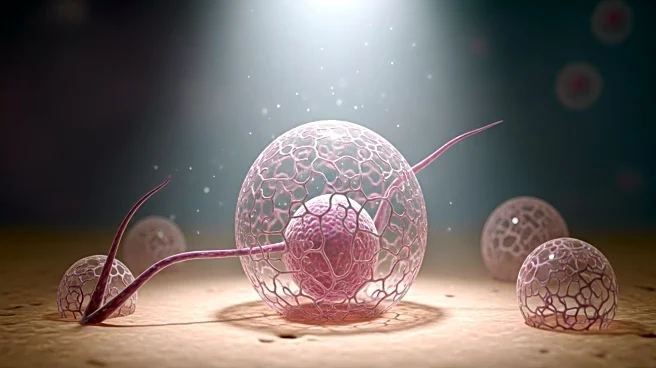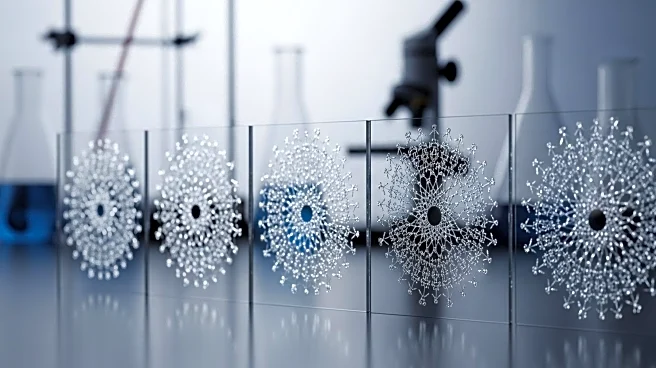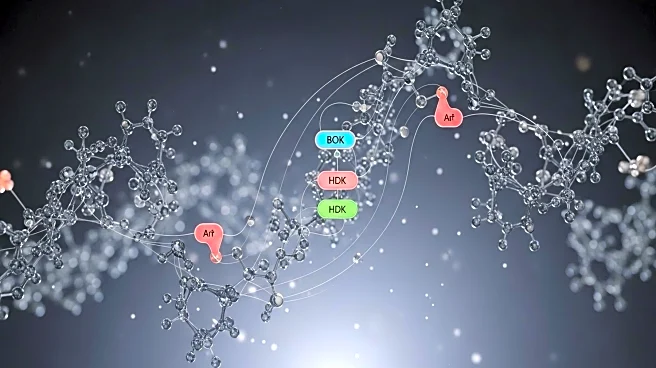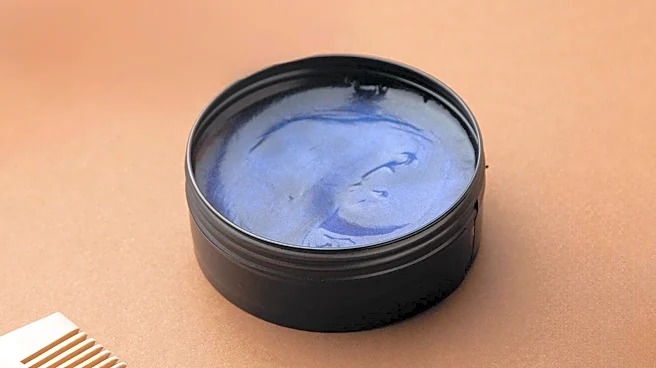What is the story about?
What's Happening?
A recent study published in Nature Communications has revealed a significant discovery in the field of skin regeneration. Led by Kaelyn Sumigray, PhD, and Stefania Nicoli, PhD, the research team found that during the earliest stages of embryonic development, skin stem cells play a crucial role in forming a protective layer that accelerates healing. This discovery was made through the examination of zebrafish embryos, which share similar skin organization with human embryos. The study identified two proteins, collagen and laminin, that contribute to the extracellular matrix, influencing the resilience and healing capabilities of the skin. The findings suggest that these proteins help balance the skin's ability to grow and repair, offering insights that could lead to improved skin grafts and transplantation methods.
Why It's Important?
The implications of this study are significant for the field of regenerative medicine and tissue engineering. Understanding the mechanisms by which skin stem cells contribute to healing can pave the way for developing advanced skin grafts and organ repair techniques. This research highlights the potential to enhance the body's natural healing processes, which could benefit patients requiring skin transplants or suffering from injuries. By manipulating the proteins involved in skin resilience, scientists may be able to create personalized treatments that strengthen cellular connections and improve recovery outcomes. This advancement could lead to breakthroughs in medical treatments, offering new hope for individuals with chronic wounds or skin conditions.
What's Next?
The study opens avenues for further research into intratissue communication and the development of regenerative medicines. Researchers may explore how to guide stem cells to create mechanical shields that protect tissues, potentially leading to personalized medical treatments. The findings could also influence future studies on the role of stem cells in other parts of the body, expanding the scope of regenerative medicine. As scientists continue to investigate the properties of stem cells, there is potential for new therapies that enhance the body's natural healing abilities, offering improved outcomes for patients with various medical needs.
Beyond the Headlines
This research not only advances scientific understanding of skin regeneration but also challenges existing perceptions of stem cell functions. The discovery of a mechanical logic in stem cells to build protective layers suggests broader applications across the adult body. This could lead to innovative approaches in tissue engineering, where stem cells are guided to enhance resilience and healing in specific tissues. The study underscores the importance of interdisciplinary research in uncovering complex biological processes, potentially transforming medical practices and improving patient care.
AI Generated Content
Do you find this article useful?













